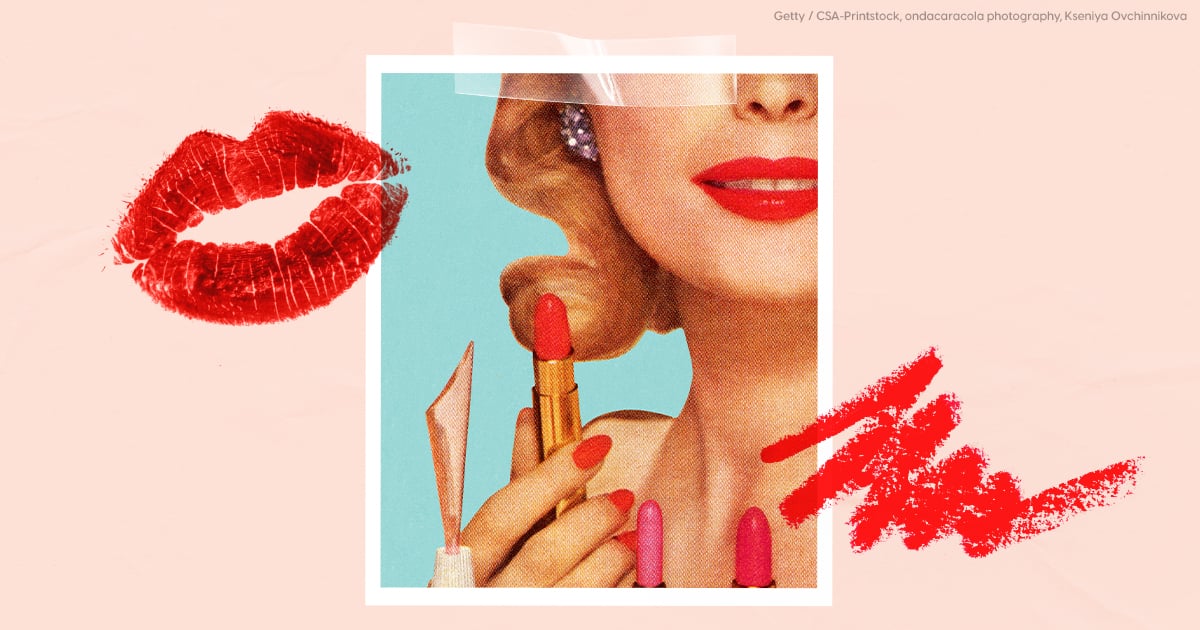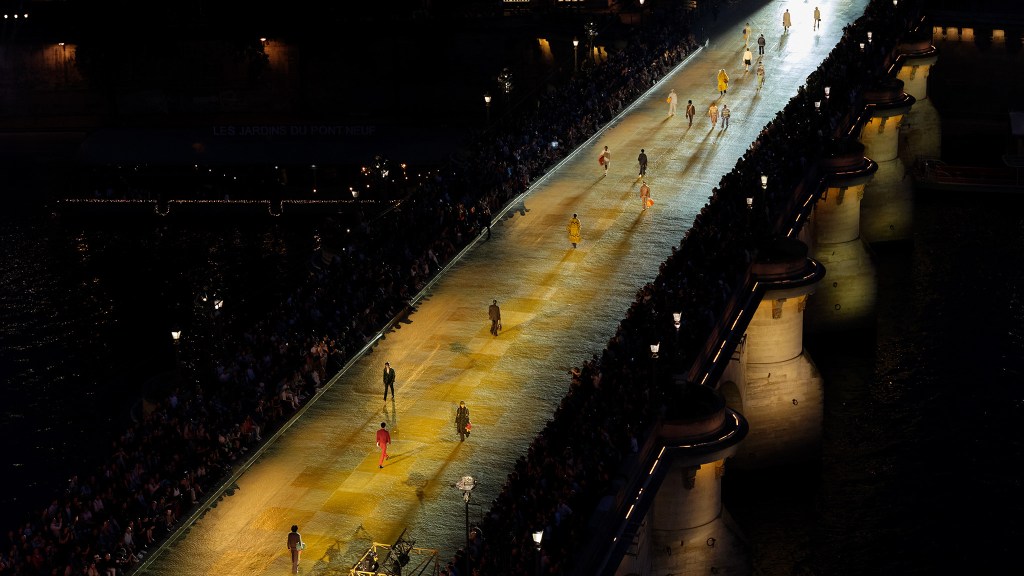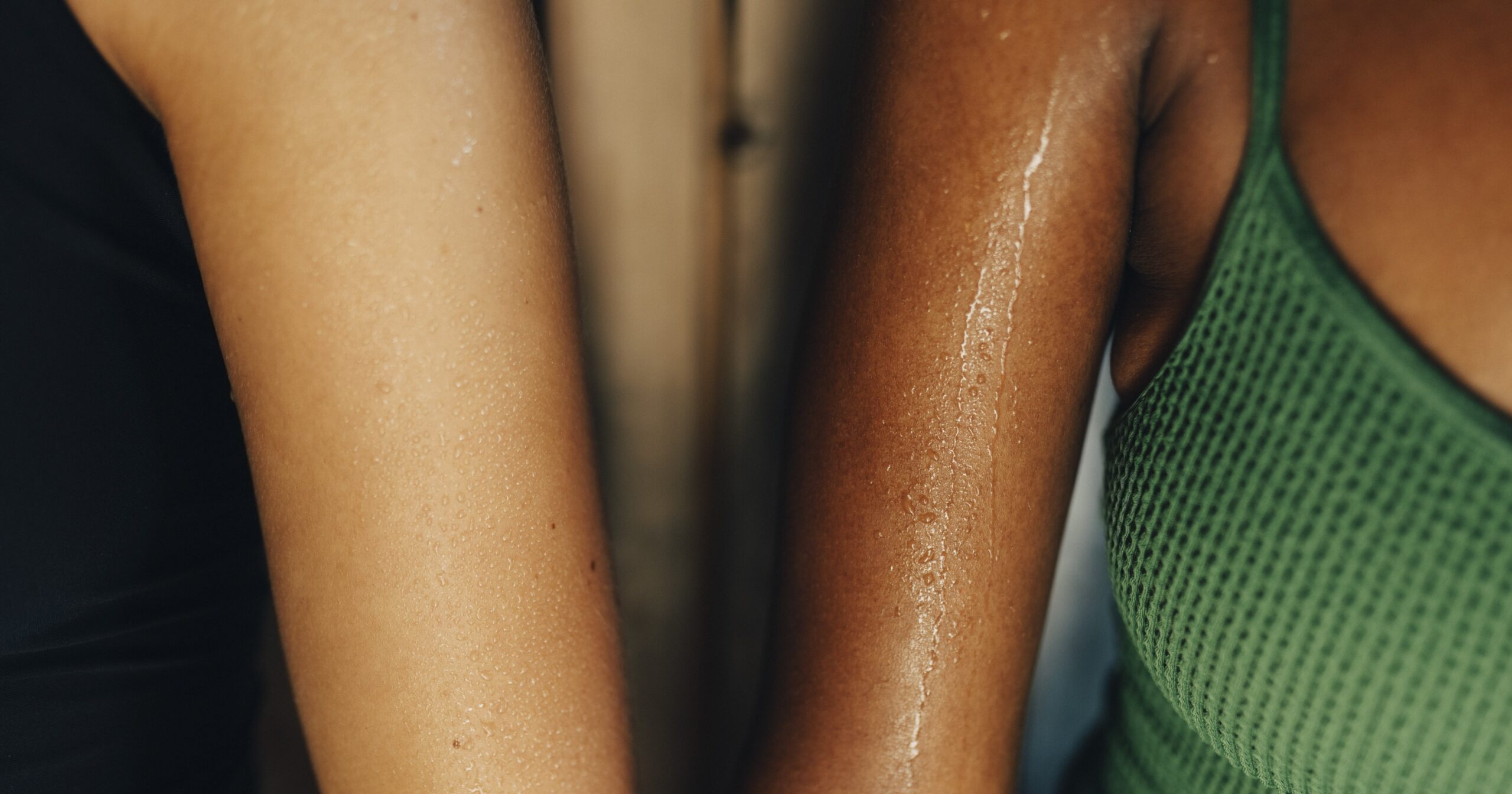Image Source: Getty/ CSA-Printstock, ondacaracola photography, Kseniya Ovchinnikova Photo Illustration by Aly Lim
There have been a few defining moments of 2024 so far, one of them being the rise of tradwife content. A shorthand for the term “traditional wife,” the moniker refers to women on social media who are glorifying conservative gender roles in the home. In these posts, tradwives can readily be seen in frilly house dresses covered by aprons as they cook, clean, bake, and do chores around the home. Their hairstyles typically employ some type of curl or coif, and they’re usually made up with a hint of lipstick and matching blush – the epitome of the aesthetic that was popular during the 1950s.
At the same time, something interesting is taking place. Whereas experts predicted a full resurgence of the grungy indie-sleaze trend – a notable departure from the minimalist “clean girl” aesthetic that has reigned over the last few years – beauty and trend enthusiasts have seemingly landed somewhere in the middle. Aesthetics like coquette beauty, the angel-eyes trend, and Barbiecore are placing hyperfemininity at the forefront, championing all things pink, bows, and glitter – and it’s catching on quickly.
While one sector of the population seems to be opting for a more demure, old-fashioned, traditionalist aesthetic, another is going directly into the opposing territory: girlish to the point of seeming almost childlike and decidedly maximalist. Though it may not seem that these two groups of people have much in common, their aesthetic choices are both reactions to women’s rights being under attack in the United States. According to experts, it’s not a coincidence that these two movements are occurring simultaneously.
How the Traditional and Modern Femininity Aesthetics Are Related
The throughline between the rise of these two aesthetics is the performance. Subscribers of each movement are taking extreme approaches to convey the messages that they want to send to the world via the way they look.
“Social and political movements . . . often reflect societal values as well as cultural shifts,” psychologist Carolyn Mair, PhD, tells PS. “These moments have shaped the way people express themselves through clothing, hairstyles, makeup, and other aesthetic choices.” Tradwives espouse the safety of women under the protection of the patriarchy. They use their hairstyles, makeup looks, and clothing choices to transport themselves to a time when this school of thought was the norm for society. In 2024, two years after Roe v. Wade was overturned in the United States, the dresses, vintage hairstyles, and full glam to do housework send a message to other people that in the face of looming threats toward women and their bodily autonomies, they choose to bow to expectation. As a tradwife, the woman leaning into this aesthetic is choosing to play the role picked for them by society – unyielding supporters of the status quo no matter the cost.
Alternatively, those who subscribe to modern hyperfemininity are opting for a sort of visual “fuck you” – a middle finger to the man by taking back ownership of aesthetics that have been deemed “too girly” and therefore immature and ultimately useless to the world. “Embracing hyperfeminine characteristics can be a means of empowerment and self-expression, an expression of confidence, commitment to pleasure, and self-care,” Dr. Mair says. What the existence of these two aesthetics does is contort what is described as the “masculine gaze” for their own perceived benefit.
Understanding Gazing
“Film theorist Laura Mulvey described the term ‘masculine gaze’ in her work,” says Rosemarie Garland-Thomson, PhD, professor emerita of English and bioethics at Emory University and author of “Staring: How We Look.” “It’s the idea that people who are in a male or masculine position in the social order have the privilege and the power to look at women and constitute them socially. This is an inherently sexualized and heteronormative lens. As a result, the idea is that gazing creates this gendered dynamic.”
When you think of a masculine stare and how it affects society, it often has to do with how people imagine themselves in the social system. “If you understand yourself as being a cute little girl, a sexy beauty, or anything like that, then you often comport yourself to be the recipient or the object of the male gaze,” Dr. Garland-Thomson says. “Part of the theory of masculine socialization is growing up to feel as if you have the capacity and the power to stare, look, or to gaze at a woman because you endow her with her own sexuality through this looking.”
Have you ever looked at someone with a bow in their hair and presumed them to be innocent? What about feeling a slight sense of unease when spotting someone who wears black lipstick? Long stiletto-shaped red nails? The way that many of us in greater society process visual cues, especially when it comes to beauty aesthetics, is a result of the masculine gaze. Why? Because patriarchy is the social system that the majority of the world operates under.
Even though the way that we purport ourselves in society is inherently gendered, the performance of beauty, and by extension the manipulation of the masculine gaze, has always been used as a tool of either conformity or defiance, and it’s been happening since long before the political landscape became what it is today.
Unpacking Beauty and Femininity as Politics in America
Though participation in beauty trends and generally caring about how people perceive you is seen as an inherently feminine act, the resulting trends often reflect the politics of the period they existed in.
The “lipstick effect” occurred when sales of the product increased during the Great Depression, as women attempted to hold on to some semblance of normalcy by keeping up their appearances. The use of hair relaxers gained popularity in the 1950s and ’60s during the civil rights era, when African Americans were attempting to assimilate into a racist society that touted white beauty standards as the norm. While an individual act, certain beauty practices can signal that you belong to a larger community that holds a particular set of beliefs, whether they be religious, social, or political. To that end, it would make sense that certain aesthetics have also historically served as acts of resistance.
In the 1960s, Black Panthers like Kathleen Cleaver were at the forefront of the “Black is beautiful” movement, an effort to push back against the whitewashed beauty standards that were dominant at the time. During protests, they wore their natural Afros out and unencumbered – a glaring rejection of the use of chemical hair straighteners. Further back in the 1900s, red lipstick became a part of the unofficial uniform for suffragettes; the then-scandalous color got extra eyes onto protestors, allowing them to reach larger audiences as they continued fighting for the right for women to vote. Even earlier than that, cornrow hairstyles are thought to have sometimes been used as communication tools for enslaved people to pass on messages and preserve the seeds of ancestral rituals – and may have been used as physical maps to routes of escape.
The use of beauty and the manipulation of the male gaze to exist in society as a conformist or a rebel has existed seemingly since the beginning of time, and this dichotomy points to one thing. Patriarchy is an overbearing system that will either celebrate or crush you – but in the end it doesn’t matter. Because unless you’re a white man, this system will never truly be to your benefit, no matter how you twist, turn, and transform – it was not set up for anyone outside of this demographic to truly thrive. So, the sobering reality is that regardless of which aesthetic you feel more closely aligned with and whatever that subsequently means about your belief systems, we are all participating in upholding the patriarchy, because that’s all we’ve ever been allowed to do.
Ariel Baker is the assistant editor for POPSUGAR Beauty. Her areas of expertise include celebrity news, beauty trends, and product reviews. She has additional bylines with Essence and Forbes Vetted.



